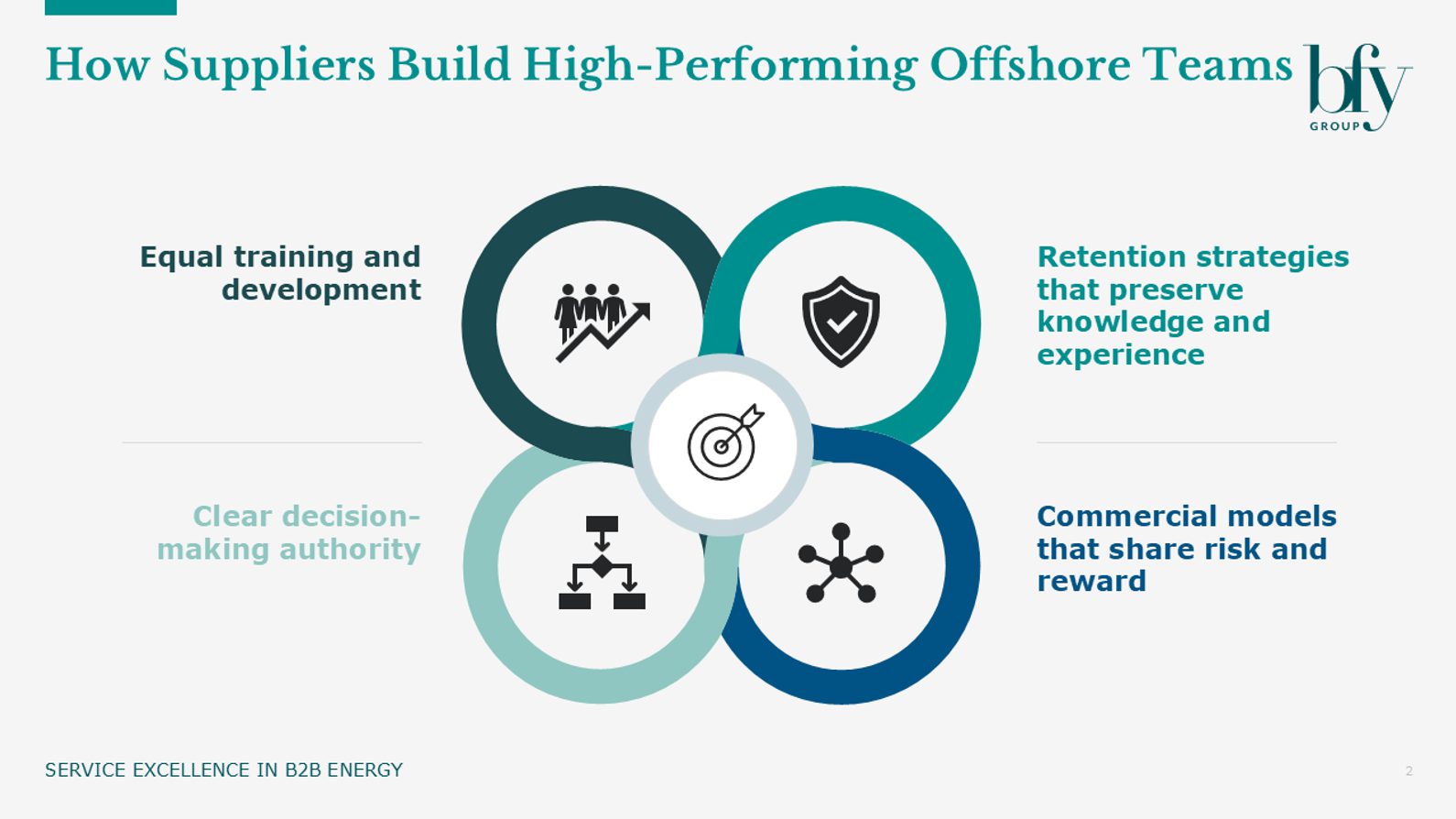Delivering consistent service quality at scale in B2B energy takes more than strong frontline capability.
In this second article on Service Excellence, we look at the role of integrated offshore teams and how effective management can drive consistency, customer satisfaction, and commercial outcomes.
Offshore teams play a central role in many customer operations. When integrated effectively, they contribute directly to service consistency, customer satisfaction, and commercial results. This article explores how to get offshore delivery right.
We’ll cover:
- The importance of applying the same training, quality, and retention standards across all teams
- The assumptions that often hold businesses back and how to challenge them
- The shared characteristics of high-performing offshore models
Rethinking the Role of Offshore Teams
Many suppliers have added offshore teams into their contact centre operations. But the value they deliver depends entirely on how they’re integrated and managed.
High-performing organisations don’t view offshore delivery as a cost-saving exercise. They bring offshore teams into the heart of their service model, aligning them to the same standards, training, and expectations as onshore teams. The result is a more consistent customer experience, greater operational flexibility, and stronger commercial outcomes.
Consistency of Standards is Non-Negotiable
Every customer, regardless of where their call is handled, expects the same level of service. That expectation doesn’t change based on geography, and your operating model shouldn’t either.
Offshore teams should be trained and developed to the same standards as onshore teams, with access to the same coaching, systems, and performance expectations.
When we raise this with clients, we sometimes hear concerns like:
- “It’s the outsourcer’s problem to solve - we’re just buying call fulfilment.”
- “Their churn is too high - it would be too expensive.”
But in our experience, the highest-performing offshore teams are also the most stable. The suppliers take a long-term view, investing in training, coaching, and local leadership. Turnover is managed proactively, and the focus on development leads to stronger outcomes for both the customer and the business.
Investment Drives Performance and Sends a Clear Signal
We’ve seen that when offshore teams are trusted, trained, and properly supported, service quality improves, often significantly. These teams are capable of delivering to the same standards as onshore operations, provided the right conditions are in place.
Investing in structured training, ongoing coaching, and strong local leadership builds long-term capability and stability. While this can raise the hourly cost, it typically reduces the overall cost to serve through improved quality, fewer repeat contacts, and higher first-time resolution.
It also sends a message: that every team, wherever they’re located, plays a critical role in the customer experience.
What High Performing Offshore Teams Have in Common
In our experience, the strongest offshore teams consistently demonstrate:
- Equal training and development
- Clear decision-making authority
- Retention strategies that preserve knowledge and experience
- Commercial models that share risk and reward

The Bottom Line
Offshore delivery has the potential to contribute far more than just scale or cost reduction. When built and supported in the right way, offshore teams can deliver meaningful improvements in service, efficiency, and customer experience.
In the final part of this series, we’ll explore how great service becomes a commercial lever and why high performing customer operations are now influencing strategy at the top table.
If you’d like to explore how to strengthen your offshore model and embed consistent service across every team, contact Ian Barker or Hannah Sword.
Ian Barker
Managing Partner
Ian shapes the BFY vision and inspires our team to bring it to life, while remaining central to complex client engagements in Strategy, Commercial, and Operations.
View Profile

